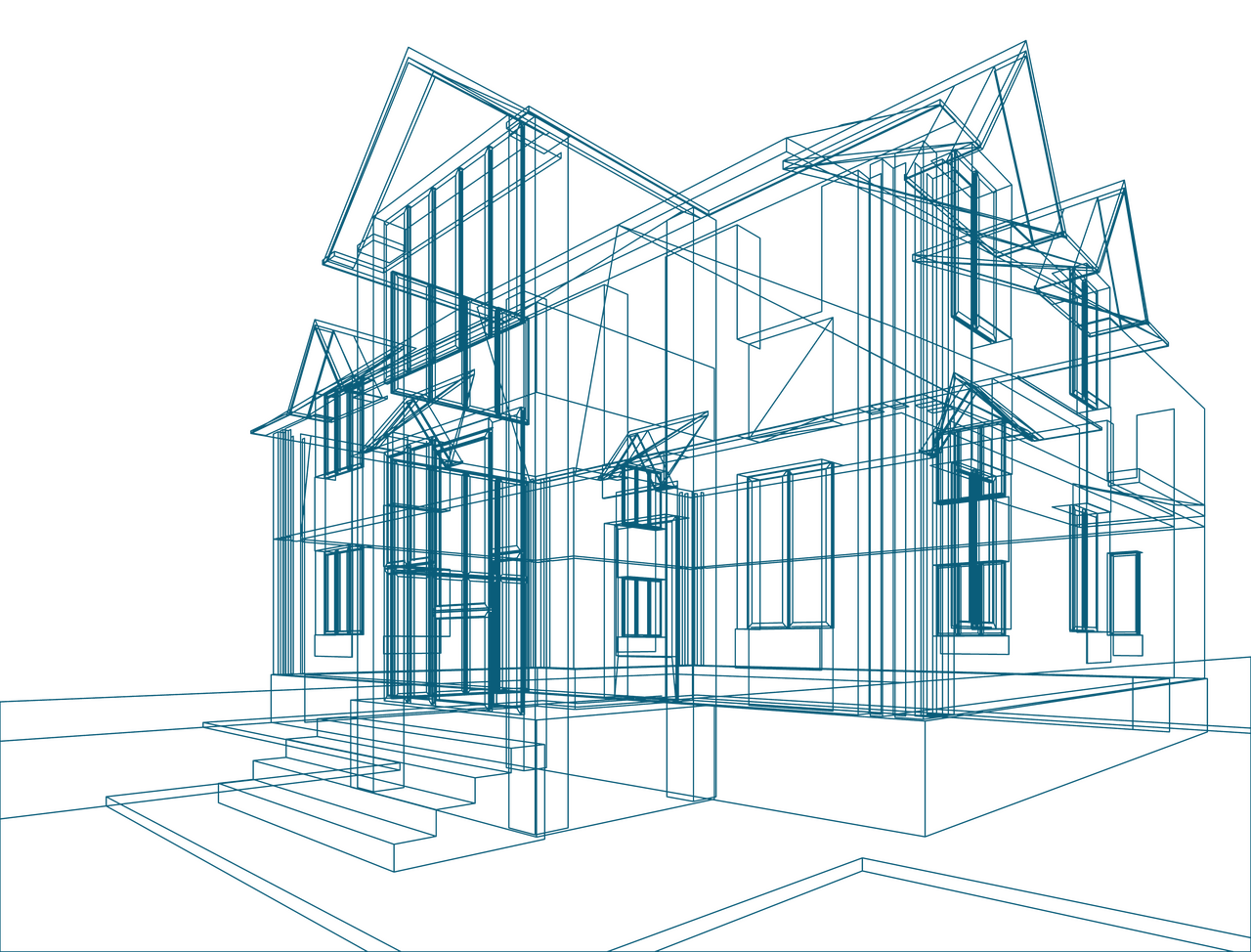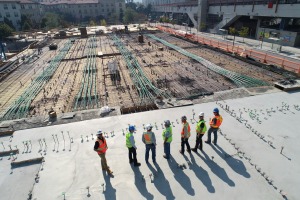


Blogs I gepubliceerd 03 June 2024 I Dirk Hoogenboom
Waarom is Productontwikkelingsonderzoek Belangrijk en Hoe Voert u het Uit?
Innovatie is hard werken. Bedrijven ontwikkelen en evolueren tegenwoordig in een razend tempo, en om voorop te blijven lopen, moet u voortdurend producten introduceren die cruciale verbeteringen voor eindgebruikers bieden. Maar met klantbehoeften die regelmatig veranderen en gegevens over efficiëntie die variëren, is het niet eenvoudig om aan verwachtingen te voldoen en tegelijkertijd verschuivingen te voorspellen. Daar komt productontwikkelingsonderzoek om de hoek kijken.
Het lijkt een eenvoudig proces: u identificeert de behoeften van de markt, vult de kloof op en levert klanten een “beter product” dat de concurrentie overtreft. Hoewel dit algemene principe voor elk bedrijf geldt, zijn de nuances in de bouw-, installatie- en woningverbeteringssectoren minder rechtlijnig. Typisch productontwikkelingsonderzoek bestaat eigenlijk niet in deze sectoren, wat betekent dat degenen die ervoor kiezen een op maat gemaakte en toegewijde aanpak nodig hebben. Dit betekent dat de kosten van onderzoek hoog zijn, maar zoals u weet, is het ontwikkelen van een nieuw product ook kostbaar. Het versnellen van de ontwikkeling door snel door de analysefasen te gaan, kan verleidelijk zijn, maar brengt risico’s met zich mee zoals het over het hoofd zien van belangrijke details, wat op de lange termijn veel kostbaarder kan blijken te zijn.
Hieronder bespreken we de basisprincipes van productontwikkelingsonderzoek en geven we praktisch advies om het efficiënt aan te pakken, zodat u risico’s kunt beperken, middelen kunt optimaliseren en producten kunt leveren die volledig resoneren met uw doelgroep.
Hoe Voert u Productontwikkelingsonderzoek Uit?
Een standaardaanpak voor productontwikkelingsonderzoek is niet genoeg. Hoewel het einddoel hetzelfde blijft – gegevens gebruiken om het best presterende product te leveren – varieert het proces sterk per sector en project. Dit is vooral duidelijk in de woningverbeterings-, bouw- en installatiebranche, dus weten wat u moet doen en hoe u het moet doen, vereist een flexibele methodologie. Laten we de basis samen verkennen.
1) Marktbehoefteanalyse
Een gebruikelijke stap voorafgaand aan de ontwikkeling van een nieuw product is het uitvoeren van een marktbehoefteanalyse. Dit is een nuttige strategie om onvervulde behoeften te identificeren en het potentieel voor nieuwe producten te overwegen. Het hoofddoel is om opkomende trends te identificeren en hiaten in de markt te ontdekken, zodat u uw aanbod kunt afstemmen op de behoeften van uw doelgroep.
Dit omvat vaak het interviewen van sleutelgroepen die uw product zouden gebruiken of voorschrijven. B2B-professionals zijn moeilijker online te bereiken, dus online enquêtes zijn minder effectief. B2C-consumenten zijn eerder geneigd om online deel te nemen, dus online enquêtes kunnen daar zeer effectief zijn. Onderzoek kan zowel kwalitatief als kwantitatief zijn, afhankelijk van uw specifieke doelstellingen.


2) Concepttesten
Na een grondige behoefteanalyse hebt u een duidelijk begrip van de markt en een idee, concept of product bedacht om in de vraag te voorzien. Dit idee moet nu worden gevalideerd, wat betekent dat u het in detail uitlegt aan uw doelgroep en de voordelen met hen bespreekt.
Dit is weer het beste te doen door professionele gebruikers te interviewen over hun mening. Kwalitatief onderzoek geeft inzichten in specifieke klantbehoeften, terwijl kwantitatief onderzoek betrouwbare statistische informatie biedt.


3) Prototype Testen
Zodra het idee volledig is uitgewerkt en een prototype is ontwikkeld, willen fabrikanten het in de praktijk testen om te zien hoe het presteert in realistische omstandigheden. Dit houdt in dat het product praktisch wordt beoordeeld en mogelijke tekortkomingen worden ontdekt.
Dit kan worden gedaan door professionele gebruikers, zoals aannemers of installateurs, die met de nieuwe apparatuur werken. Wat op papier goed leek, kan in de praktijk anders uitpakken, dus feedback van experts zal helpen om de volgende stappen te bepalen.


4) Evaluatie na Lancering
Het product is op de markt, maar de taak is nog niet voltooid. Evaluaties na de lancering zijn essentieel om te beoordelen hoe goed het product wordt ontvangen, marktaandelen te monitoren en te bepalen of extra inspanningen nodig zijn om groei te stimuleren.
Het doel is om de impact van het product op de markt te analyseren en kansen voor optimalisatie te identificeren. Door klantinzichten en markttrends te volgen, kunt u uw product blijvend verbeteren.


Conclusie
Productontwikkelingsonderzoek is een doorlopend proces dat grondige analyse vereist. Of het nu gaat om bouw, installatie of woningverbetering, u heeft een aanpak nodig die zich richt op het beoordelen van de concurrentie, het evalueren van concepten en het verwerken van feedback. Door nauw samen te werken met experts zorgt u ervoor dat u de juiste beslissingen neemt en uw product in lijn brengt met de behoeften van uw bedrijf.

Lees verder


07 april 2025 I Dirk Hoogenboom
Marktonderzoek in de Installatiesector – Geen Giswerk Meer Nodig


04 april 2025 I Dirk Hoogenboom
Besluitvorming in de Bouw is Niet Simpel – Waarom Marktonderzoek een Concurrentievoordeel Oplevert


24 maart 2025 I Dirk Hoogenboom
Waarom Trekken Klanten Zich Terug uit Duurzame Bouwinvesteringen?


17 maart 2025 I Dirk Hoogenboom
De Staat van Woningverbetering: Belangrijke Trends en Marktinzichten

Verse inzichten staan klaar
Onze relevante rapporten
Bekijk onze meest recente marktrapportages voor de bouw-, installatie- en doe-het-zelfmarkt, gebaseerd op solide kwantitatief onderzoek.
Bouw
Doe-het-zelf
Installatie
Speciale rapporten
Bouw
Trends in materiaalgebruik Q1 2024
2024 102 paginas
Ontdek de evoluerende trends in materiaalgebruik onder Europese architecten in Q1 2024. Duik in de factoren die materiaalvoorkeuren bepalen en de impact op de esthetiek en duurzaamheid van de bouw.
2,000 euro
Bouw
Media-oriëntatie H2 2021
2024 161 pagina's
Verken de media-betrokkenheidspatronen van aannemers om uw marketingstrategieën te optimaliseren. Duik in een pool van inzichten die onthult hoe aannemers omgaan met verschillende mediakanalen.
6,300 Euro
Bouw
European Green Deal Q4 2021
2024 88 pages
Explore the impact and reception of the European Green Deal among architects. Understand how the initiative is influencing architectural practices and sustainability measures.
1,850 Euro
Bouw
Koop kanalen H2 2023
2024 123 pagina's
Ontdek het koop- en bestelgedrag onder aannemers in H2 2023. Ontdek de belangrijkste gebruikte kanalen, share-of-wallet en nog veel meer.
6,000 Euro
Bouw
Prefab in aanbouw Q3 2023
2023 90 pagina's
Verdiep je in de invloedrijke rol van aannemers binnen de besluitvormingseenheden van de bouw. Onderzoek de dynamiek en de mate van impact die aannemers hebben bij cruciale bouwbeslissingen.
1,850 Euro
Bouw
Gedragssegmentatie en mediagebruik 2023
2023 75 pagina's
Dit rapport geeft een uitgebreid overzicht van koopgedrag, producten en mediagebruik, specifiek gericht op Europese klusjesmannen. Het gaat in op hoe klussers media gebruiken, en voor welke doeleinden, en onderzoekt hun gewoonten en voorkeuren op het gebied van koopgedrag.
8,600 Euro
Doe-het-zelf
Branding Q3 2024
2024 74 pages
Discover the power of branding in the home improvement sector. Explore how strong branding influences consumer preferences and purchase decisions.
3,500 Euro
Doe-het-zelf
Sustainability Q1 2024
2024 81 pages
Delve into sustainability trends in the home improvement sector in Q1 2024. Discover consumer preferences and the shift towards eco-friendly home improvement solutions.
3,500 Euro
Doe-het-zelf
DIY versus DIFM Q4 2021
2024 113 pagina's
Dit rapport is een must-have als u in de woningverbeteringsindustrie werkt. Het biedt een schat aan informatie over het gedrag van doe-het-zelf- en DIFM-consumenten, hun motivaties en de factoren die hun aankoopbeslissingen beïnvloeden.
3,150 Euro
Doe-het-zelf
Doe-het-zelf of doe-het-voor-mij Q4 2023
2024 70 pagina's
Ontdek de heersende trends tussen doe-het-zelf en DIFM in Q4 2023. Begrijp de voorkeuren van de consument en de factoren die van invloed zijn op hun keuze tussen doe-het-zelf en DIFM.
3,500 Euro
Doe-het-zelf
Branding Q3 2023
2023 93 pagina's
Dit rapport biedt een uitgebreid overzicht van de doe-het-zelfbranche, met een focus op branding en de meest populaire merken binnen verschillende categorieën. In dit rapport krijgt u inzicht in hoe klanten merken voor woningverbetering ervaren en wat hen motiveert om bepaalde producten te kopen.
3,500 Euro
Doe-het-zelf
Inkoop kanalen Q2 2023
2023 114 pagina's
De European Home Improvement Monitor biedt waardevolle inzichten in aankoopkanalen in de Europese doe-het-zelfsector en onderzoekt de veranderende voorkeuren en gedragingen van consumenten in de traditionele detailhandel en opkomende online platforms.
3,500 Euro
Installatie
Duurzaamheid Q1 2024
2024 99 pagina's
Het European Electrical Installation Monitor rapport geeft een gedetailleerde analyse van de duurzame oplossingen in de installatiebranche. Dit rapport richt zich specifiek op duurzaamheidsaspecten in de industrie.
3,250 Euro
Installatie
Challenges toward sustainable future Q4 2021
2024 111 pages
2,650 Euro
Installatie
Inkoop kanalen Q4 2021
2024 106 pagina's
Verdiep je in de opleidingsbehoeften binnen de elektrotechnische installatiesector. Begrijp de gebieden die de ontwikkeling van vaardigheden vereisen om aan de veranderende eisen van de industrie te voldoen.
3,150 Euro
Installatie
Opleidingsbehoeften Q4 2023
2024 110 pagina's
Dit rapport onderzoekt de opleidingsbehoeften van installateurs, zowel digitaal als persoonlijk. Het volledige rapport behandelt alle belangrijke opleidingsbehoeften en -aspecten en biedt een uitgebreid overzicht van de bedrijfsontwikkeling in de installatiesector in belangrijke Europese landen.
2,800 Euro
Installatie
Inkoop kanalen Q4 2023
2024 97 pagina's
Dit rapport biedt een uitgebreid overzicht van het koop- en bestelgedrag van e-installateurs in Europa. In het rapport vind je belangrijke informatie over de inkoopkanalen die installateurs gebruiken, de share-of-wallet per kanaal, de manier van bestellen en nog veel meer.
3,250 Euro
Installatie
Inkoop kanalen Q3 2023
2023 106 pagina's
Dit rapport geeft een uitgebreid beeld van de houding van installateurs ten opzichte van aankoopkanalen, met name onder HVAC-installateurs. In het rapport vind je inzichten in koopgedrag, welke kanalen het meest worden gebruikt, welke groeien en of online kanalen steeds meer geaccepteerd worden.
2,800 Euro









